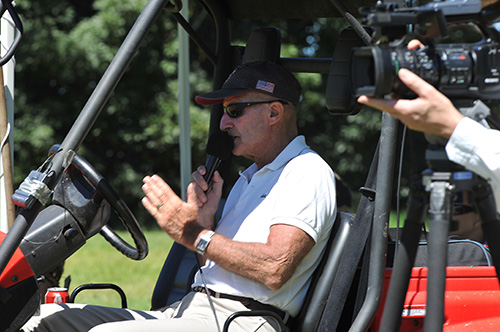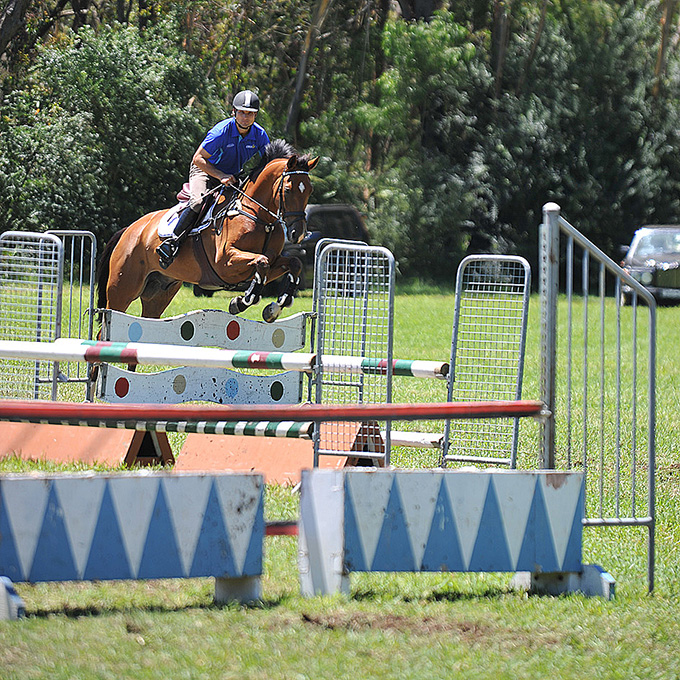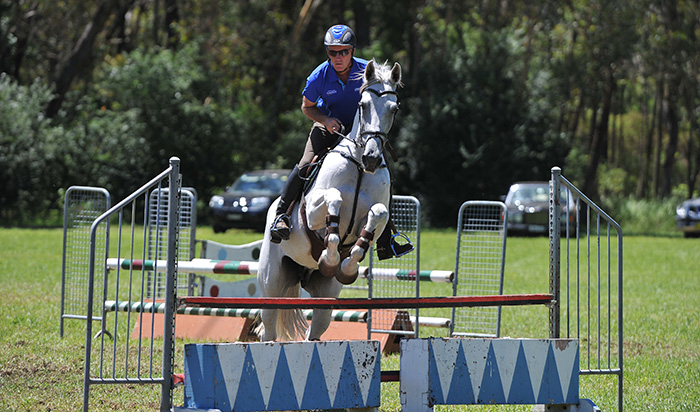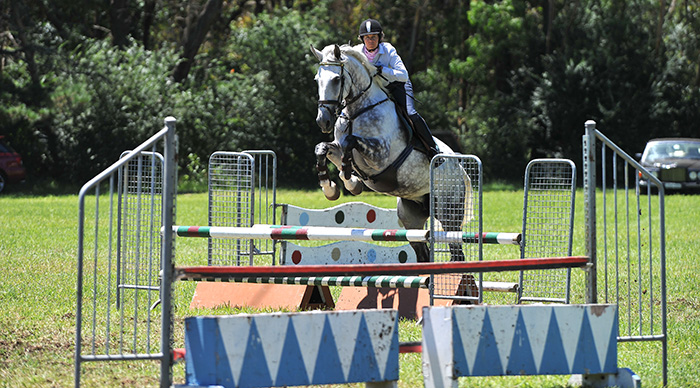The American system of jumping has often been associated with the crest release system, and while George’s system has a place for the crest release – ‘good technique, but over done’ – he is more interested in the more sophisticated automatic release. So as the group of riders approached the rails with alternate ends down, they were enjoined to:
“Approach in trot, hands quite wide, and relax your arm. Over the rail either trot or pick up canter, let the horse do that. Sit perfectly still, don’t touch the horse’s mouth, follow it – you block by touching.
“The hands shouldn’t touch the horse’s neck, they are alongside the neck. Wait for the horse – that is the great principle of getting to the fence, and waiting for the horse. Let the horse take you to the fence, relax and go with him. You are such hand riders, when it should be about teaching self-carriage to your horse.”
“As the horse turns the corner, soften and let the horse take you (to the fence). The horse has to teach himself self-preservation. If he gets quick use your voice and don’t grab his mouth. Bounces are wonderful because they work on the rider’s position and the horse’s ability to read the jump…”
The riders were working on George’s three fences on a bending line, more or less, four strides apart, working again on ‘the habit of consistent precision.
“This is a classic exercise – broken lines – in dressage it would be half pass zig zags. It is exactly the same as the dressage exercise, it gets the horse light in the shoulder.”
Read more:







